More about: Marrakech in 2 Days: what you need to know to make sure you don't miss a thing
A two-day stay in Marrakech, although short, will allow you to cover much of what there is to see and do in Marrakech and even some of the places located just in its surroundings. The city has more than a million and a half inhabitants and is part of the Imperial Cities of Morocco along with Fez, Meknes and Rabat.
To make the most of these two days you need to plan your time well. Only then you can get lost in the maze of streets that form its Medina to see its mosques and souks, visit the Palm Grove and experience the atmosphere of the Jamaa el Fna square.
Day 1: From the Medina to the Jamaa el Fna Square

One of the best ways to adapt to the city is to make the first visit to the city with a guided tour. The routes of many of these guided tours are similar to the itinerary I have prepared for the first day.
Specifically, the plan for this first day includes highlights such as the souk and the Medina, without forgetting the Jamaa el Fna Square in its day and night versions.
Enter the kashbah through the ancient Bab Agnaou gate
To make the most of your time in Marrakech, whether you do the tour on your own or with a guide, the day should start early in the morning.
Although the nearby Bab er Robb was the official entrance to the city, the tour will begin at Bab Agnaou. As its name indicates ("bab" means gate in Arabic), it was one of the 19 entrances in the walls leading to the interior of the town.
Bab Agnaou is the gate leading to the kashbah, a type of fortified building of Berber origin that ended up serving as a residence for a powerful family. In this case, it is the royal kashba. The entrance, built in the 12th century, is monochrome and has a central arch leading to the El Badi palace and the Saadid tombs.
The Saadian tombs and their impressive hall
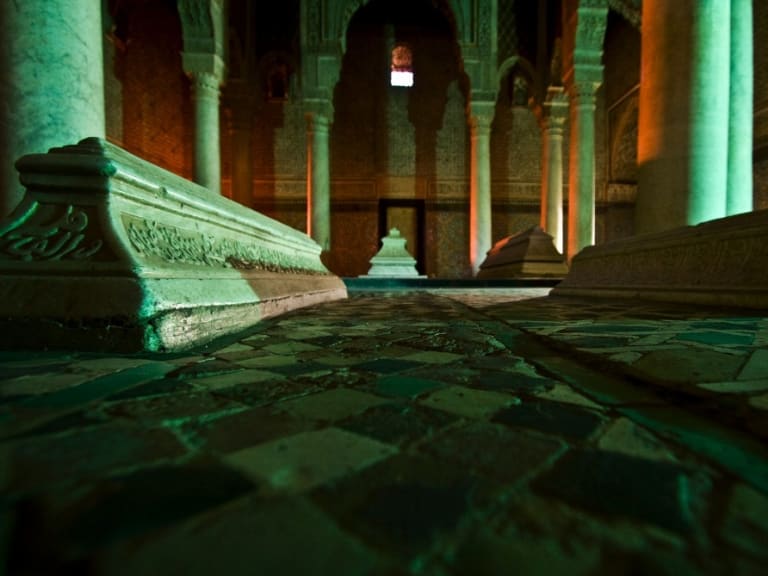
The next point of the tour is not to be missed, as you just have to walk to a green tiled minaret located a few meters from Bab Agnaou. The minaret in question is part of the Moulay El Yaziz Mosque, next to which are the Saadid tombs, one of the most interesting visits in all of Marrakech.
These tombs are dated to the late sixteenth century, when Sultan Al Mansur ordered them to be built. However, a few decades later they were walled up by order of another sultan, Mulay Ismail and were completely forgotten. It was not until 1917 when they were rediscovered.
The access to the tombs, which can be visited with the payment of an entrance fee, is a narrow corridor that leads to a small garden. The burials of various servants, chancellors and warriors are located in the garden. Around this courtyard are located some buildings containing tombs of more important characters. The tomb of Sultan Al Mansur himself is located in the so-called room of the 12 columns, undoubtedly the most impressive room of the complex.
Palace of the Bay
On the way to the next destination, wandering through the medina trying not to get too lost if you have decided to go on your own, it is interesting to stop at the Place des Ferblantier (also included in many private tours). In addition to the beauty of the square itself, there you will find a large number of stores specializing in products made of tin and other metals.
After taking a look at the square and the stores mentioned, the tour continues until you reach one of the visits that visitors usually like the most: the Bahia Palace.
At the time of its construction in the nineteenth century, the intention was to build the largest palace in the world. Although that wish was not fulfilled, the gardens and the harem inside are two of the great attractions of the city.
Jamaa el Fna Square
If there is a place that defines the ochre-smelling city, it is the Jamaa el Fna square. When you get there you will find a large number of natural fruit juice sellers and henna tattoo artists. Next to them, street artists like the typical snake charmers or monkey tamers, without forgetting the storytellers.
The atmosphere, the smells and the images will hit you from all sides. You may well feel like photographing almost everything you see, but it is very important that you do not do so without asking permission and negotiating a price for the photo beforehand.
Get your strength back at Dar Cherifa
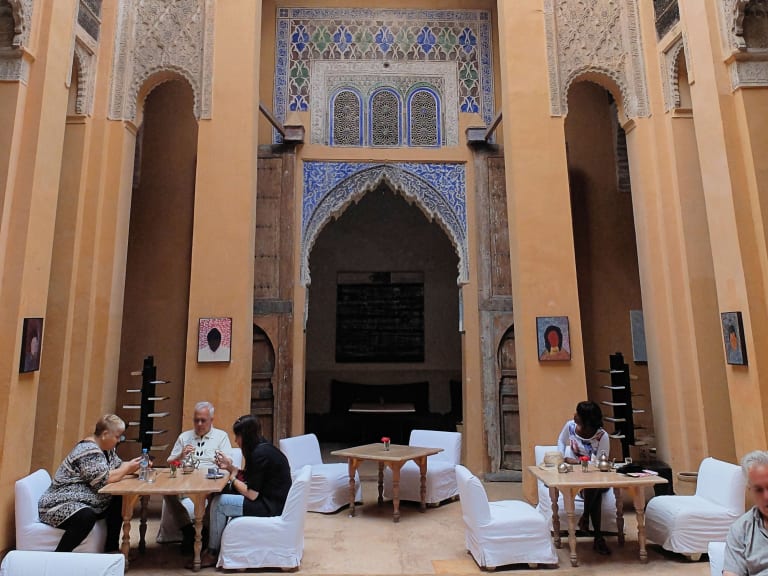
One of the most popular organized tours in Marrakech is the one dedicated to gastronomy. If, for lack of time, you have not hired it, a visit to Dar Cherifa will be a perfect introduction to Moroccan food.
This restaurant is not only one of those that serve the best dishes of tajine or couscous, but the building in which it is located is certainly spectacular. It is one of the most beautiful riads (traditional houses) in the city.
Walk calmly through the souk and learn to haggle
With your strength recovered, you still have to live one of the most intense experiences in Marrakech: walking through the souk. To do this, you can also hire one of the guided tours specific to these markets.
This large market occupies many narrow streets of the Medina, usually quite narrow. The large influx of people makes it difficult to move through them comfortably, especially if you have to share the space with many stalls placed in the same streets. To enjoy this walk I advise you to always keep calm. Also, try to avoid vendors who try to attract your attention in a more aggressive way and false guides.
The best way to do this tour is not to try to know where you are at every moment. Wander through the streets and look for the products you like the most. There you will find everything from babouches to tea sets, spices, carpets, silk garments, cosmetics, metal lanterns or djellabas. Remember, however, that the custom requires haggling with the seller to reach, or not, to reach an agreement. Each one will have an area that most appeals to him. My choice is Rahba Kedima square, where medicinal herbs and basketry are sold.
Museum of Marrakech and Almoravid Qoubba
While walking through the souk try to find an ancient Muslim school named Medersa Ben Youssef. Go inside to see its impressive central courtyard and the decoration of the arches and doors.
Very close to this place is the Museum of Marrakech. You should at least peek into its inner courtyard, as its beauty makes it one of the most recommended visits.
Right next to it is the Almoravid Quobba, the last example of this style to be found in the city, which you can also see if you go on an excursion to Essaouira. Today, the building contains a souk called Souk Foudouq Ouarzazi which is well worth a few minutes.
Koutoubia Mosque
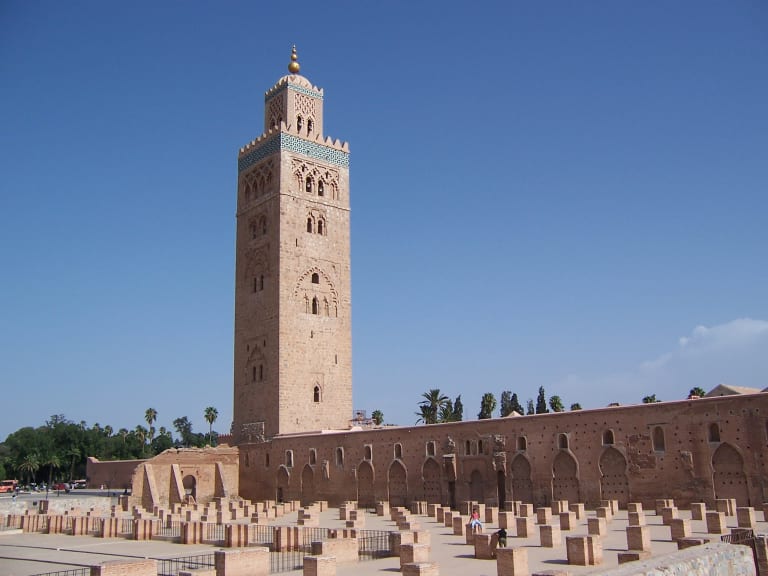
The tour of this first one requires to continue walking through the Medina of Marrakech to see one of its most famous buildings. This time, the destination is the Koutoubia Mosque, the most important mosque in Marrakech.
Although this 1158 mosque can not be visited inside, only its exterior decoration and the fabulous minaret of about 70 meters high make it an essential stop. The aforementioned minaret closely resembles the Giralda in Seville and remains the highest point in the city.
A sunset and a mint tea on the terrace of Café Glacier
After an intense day, the reward should be just as impressive. For this, nothing better than approaching the Café Glacier to enjoy a delicious mint tea on its terrace.
In addition to relaxing with your tea, from there you can watch the sunset and how the neighboring Jamaa el Fna square is transformed to face the following hours.
Back to Jamaa el Fna square
Dusk almost completely changes the appearance and atmosphere of the square. The vendors that used to occupy the square are removed and their place is taken by many food stalls that compete with each other to attract visitors.
This is certainly the perfect setting to have some dinner before retiring to your hotel. Stroll around the various stalls and choose the one that suits you best, without paying too much attention to the calls of the different vendors trying to get you to sit at their tables.
Joaquin's Traveller Tip
There is a lot of competition among the different food stalls and sometimes a waiter can be a little too insistent. Keep calm and sit in the place that interests you the most despite the calls of the rest.
Day 2: See the Palm grove and other lesser known attractions of Marrakech

Walking through the Medina and the Jamaa el Fna are truly magnificent experiences, but also exhausting. For that reason, the second day in Marrakech is going to be a bit more relaxed. Although the places to visit are somewhat less famous, I assure you that they have nothing to envy to those of the first day.
Take a short trip to the Palm Grove
The first place to go during the second day in Marrakech will be the area of the Palm Grove of Marrakech, about 10 kilometers from the Medina. The options to get there are varied. On the one hand, you can always go by cab after negotiating with the driver a rate that includes a waiting time. You can also go by horse-drawn carriage, one of the most traditional ways to get around Marrakech.
Finally, there are numerous tours that take you to the area. Practically, every visitor will find one to his taste, from the one that uses quads and allows to visit some villages to the one that includes a camel ride. In the latter case, there is also a tour that offers a sunset in the Palm Grove and a camel ride. If you are interested in this possibility, you just have to change the order of the itinerary.
The Palm Grove has traditionally been a great source of resources for the city. Although this has not changed, today it has become one of its main tourist attractions and is part of a development plan that foresees the opening of several hotels. Despite this, the place still retains a mystical air and nature is still predominant. This is possible thanks to more than 100,000 palm trees, fruit trees and plantations.
Majorelle Gardens
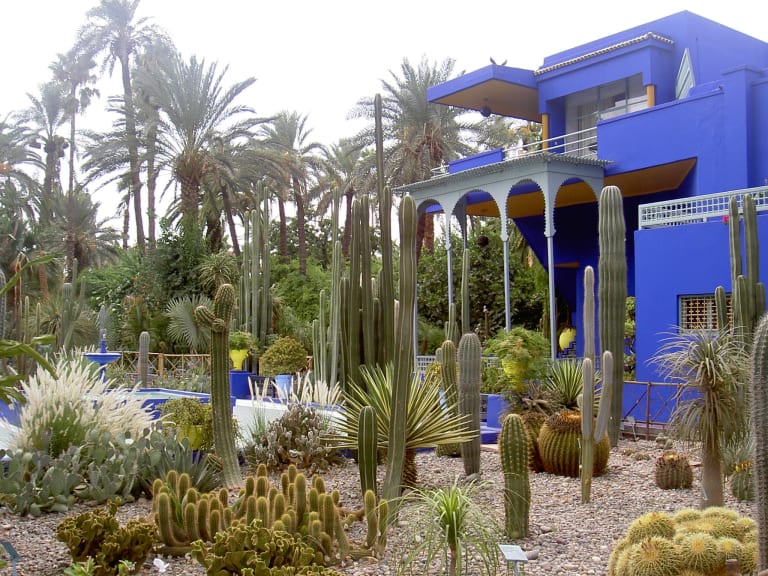
Depending on the time spent in the Palmeral it will be possible to visit these spectacular gardens.
A cab from the Palmeral itself or from Jamaa el Fna will take you there without any problems. The gardens were created by a French painter, Jacques Majorelle, in 1924 and are undoubtedly the most beautiful in the city.
Despite the climate of Marrakech, the gardens have many varieties of aquatic plants. Alongside them coexist various types of jasmine, cactus, banana trees, palm trees and bamboo. Undoubtedly, an oasis of freshness in a city surrounded by the desert.
Meet another side of Marrakech: the modern city of Gueliz
Marrakech, like the rest of the Moroccan cities, is not only its old Medina. During the French protectorate Gueliz, the modern part of the city, was built. The center of this area is the 16 November Square, where the central market is located.
This square is the origin of several avenues, including the Mohammed VI. If you walk through it, you will see that the atmosphere is totally different from the old part, despite being just as crowded.
This area is also perfect for eating something. Here you will find some western style restaurants and some Moroccan restaurants. If you have a sweet tooth, I recommend you try the Arab sweets at Patisserie Amandine.
Mellah: the Jewish quarter
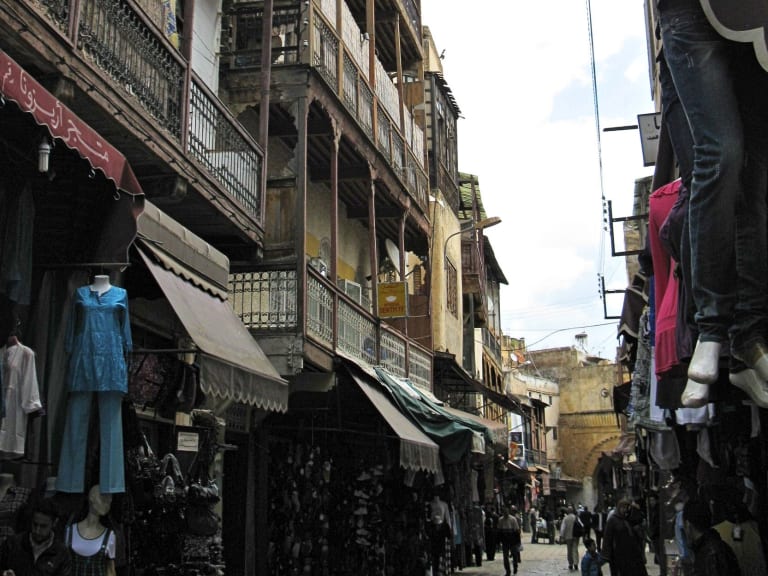
Another lesser known but very interesting neighborhood is Mellah, the former home of the Jewish community of Marrakech. One of the plans that you have to write down in your list of things to see and do in Marrakech. The neighborhood appeared in the sixteenth century, when the Spanish and Portuguese Jews were expelled from both countries and many of them settled in neighboring Morocco.
Although the Jewish community has almost disappeared, the neighborhood still retains an essence that sets it apart from other parts of the city. If you can, in addition to strolling through its streets (some of which you already visited on the first day), come and visit the Al Azama Synagogue and the Jewish Cemetery.
On the other hand, the Mellah is an ideal place to buy some gifts. In its streets you will find many stores and markets, with fewer people than in the Souk and at cheaper prices.
Relax in a hammam
One of the symbols of the Arab world are the hammams and Morocco is no exception. In Marrakech you will find a few of these high quality traditional baths where you can enjoy a good bath and massage.
When choosing one you should know that you will find some that are not mixed and require you to bring bath products. More comfortable are the ones for tourists that, although more expensive, are mixed and include everything you need to enjoy the experience.
The most recommended are Click Spa and Rosa Bonheur, but your hotel can recommend you some more so you can select the one you like the most.
Dinner at Comptoir Darna
Some of the organized tours end with a dinner that includes some of the most famous Moroccan dishes. If you prefer another option, Marrakech offers great possibilities to end your trip in style.
A great ending can be, for example, going to dinner at one of the trendiest places, the Comptoir Darna. In addition to the quality of the food, they usually offer a belly dance show away from those designed specifically for tourists.
Tips for your trip to Marrakech
In order that you can make the most of and enjoy your trip to Marrakech, I indicate a series of tips:
- Despite its geographical and historical proximity, many travelers still feel some reticence when visiting Morocco. Although, personally, I have never encountered any problems, it is always a good idea to consult some safety tips before starting your trip.
- It is important that before your trip, you are up to date on how to get around Marrakech.
- Visit my express guide to visit Marrakech in one day to know all the essentials.
- Calculate well the daylight hours you are going to enjoy, as they vary a lot depending on whether you opt for winter in Marrakech or summer in Marrakech.















